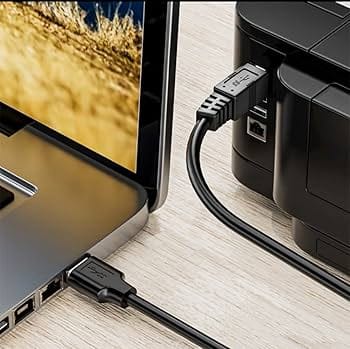Navigating CCTV Cloud Storage: Choosing the Right Service for Your Needs

Introduction to CCTV Cloud Storage and Its Importance
Closed-circuit television, commonly known as CCTV, plays a pivotal role in modern security systems. Traditionally, CCTV footage was stored on local storage devices, which posed limitations such as storage capacity and the risk of physical damage. With the advent of cloud technology, CCTV cloud storage has emerged as a groundbreaking solution, enhancing the effectiveness and convenience of surveillance systems.
The Emergence of Cloud Storage in CCTV
CCTV cloud storage involves storing video footage on remote servers that can be accessed over the internet. This innovative approach provides a myriad of benefits:
- Scalability: Unlike traditional local storage systems, cloud storage can easily accommodate increasing data volumes, allowing users to expand their storage capacity as needed without the hassle of physical hardware upgrades.
- Accessibility: Users can access their video footage from anywhere at any time, as long as they have an internet connection. This ubiquitous access ensures that surveillance is not limited by geographical constraints.
- Cost-Effectiveness: With cloud storage, there are typically no upfront hardware costs. Users often pay for only the storage they need through subscription models, making it a more cost-effective option for many.
- Data Security and Redundancy: Cloud providers usually offer enhanced security features and data redundancy, ensuring that footage is protected from tampering and loss, a risk that is prevalent with physical storage devices.
Why CCTV Cloud Storage Is Critical
The importance of cloud storage in the context of CCTV cannot be overstated. It serves not only as a safeguard for physical assets but also enhances the capabilities of security personnel. Quick retrieval of footage and real-time monitoring can be the difference between thwarting a security incident and being a victim of one. As security needs evolve and cyber threats become more sophisticated, cloud storage offers an adaptable and resilient option, maintaining the integrity of security systems in an ever-changing digital landscape.
Understanding the Basics of Cloud Storage for CCTV
Before delving into the myriad options available for cloud storage in the realm of Closed-Circuit Television (CCTV), it is essential to grasp the foundational principles underpinning this technology. CCTV cloud storage involves recording and storing video footage on remote servers accessed via the internet, as opposed to traditional systems where data is stored onsite.
- Remote Access and Management: Users can access footage from any location with an internet connection, providing added convenience and flexibility.
- Data Redundancy and Backup: Cloud storage usually incorporates multiple backups, ensuring data is protected against hardware failures or accidental deletion.
- Scalability: Services offer the option to easily scale storage capacity up or down based on current needs without investing in physical hardware.
- Cost-Effectiveness: By using a subscription-based model, users pay only for the storage they require, saving on the costs of maintaining physical servers.
- Security and Encryption: Data is typically encrypted both in transit and at rest to protect against unauthorized access.
- Integration with Other Services: Many cloud storage services for CCTV offer integration with analytics and other security tools for enhanced operational capabilities.
As organizations consider migrating their CCTV systems to the cloud, understanding these basic tenets is crucial in making informed decisions that align with specific security requirements and operational objectives. Each aspect contributes to the overarching goal of creating a robust, accessible, and secure surveillance system that balances cost against performance and usability.
The Evolution of CCTV Storage Solutions: From DVR to Cloud
Closed Circuit Television (CCTV) systems have come a long way since their inception, with storage solutions evolving rapidly from Digital Video Recorders (DVRs) to sophisticated cloud-based platforms. Initially, CCTV footage was stored locally on tapes, but this method posed significant limitations in terms of storage capacity and accessibility.
From Tapes to Digital Video Recorders (DVRs)
During the late 1990s and early 2000s, DVRs transformed CCTV storage by digitizing video footage and storing it onto hard drives. This revolution:
- Enhanced the video quality
- Improved the reliability of storage
- Allowed for larger storage capacities
- Made searching for specific footage easier
Transitioning to Network Video Recorders (NVRs)
As Internet Protocol (IP) cameras proliferated, Network Video Recorders (NVRs) began to replace DVRs. NVRs provided:
- Remote access capabilities
- Better integration with other network systems
- Higher scalability in terms of storage
The Shift to Cloud-Based Storage
Today’s cutting-edge cloud storage solutions are changing the game. Using cloud storage for CCTV systems offers:
- Off-site storage, which provides additional security against physical damage or theft
- Scalable storage options that can accommodate ever-increasing amounts of data
- Advanced analytics and AI capabilities for smarter surveillance
- Cost efficiency by eliminating the need for physical storage maintenance
- Superior redundancy and disaster recovery options
The cloud has enabled seamless integration of CCTV systems with other security components, providing a comprehensive approach to modern surveillance. The efficiency of cloud storage, coupled with its accessibility and enhanced security features, makes it an ideal solution for a wide range of CCTV applications. As the demand for more intelligent and scalable surveillance solutions grows, it’s clear that cloud storage will continue to play a pivotal role in the evolution of CCTV systems.
Assessing Your Security Needs: What to Look for in a Cloud Storage Service
When evaluating cloud storage services for CCTV footage, it’s crucial to assess your specific security needs to ensure you choose a solution that offers optimal protection and functionality. Here’s what to look for:
- Data Encryption: Ensure the service provides strong encryption both in transit and at rest. Look for AES 256-bit encryption, which is a standard among the most secure cloud storage services.
- User Authentication: Examine the types of user authentication offered. Two-factor authentication (2FA) provides an additional layer of security beyond just a password.
- Access Control: The ability to set user permissions for different levels of access to the CCTV footage is vital to maintain control over who can view or manipulate the data.
- Compliance Standards: Verify whether the service complies with industry-specific regulations such as GDPR, HIPAA, or any other relevant standards that apply to your region or sector.
- Redundancy and Reliability: Look for services that offer multiple data centers for redundancy. This ensures that if one center goes down, your data is still safe and accessible from another location.
- Data Center Security: Inquire about the physical and network security measures at the data centers where your footage will be stored. This includes protection against breaches, natural disasters, and power outages.
- Service Level Agreements (SLAs): Review the SLA carefully to understand the provider’s commitment to uptime and data availability, as well as their policies on data breaches or loss.
- Scalability: Consider whether the cloud service can scale with your growing amount of data storage needs without significant cost or performance issues.
- Recovery and Backup Options: Ensure there are robust options for data recovery and backup, so you can quickly restore data in the event of accidental deletion or corruption.
Choosing a cloud storage service responsive to your security needs is not just about compliance and preventing unauthorized access; it’s also about ensuring the integrity and availability of your CCTV footage when you need it.
Comparing Cloud Service Providers: Key Features and Differences
When evaluating cloud service providers for CCTV cloud storage, it’s crucial to dissect the key features and appreciate the differences that set them apart.
- Storage Capacity: The amount of footage you can store varies widely. Providers like Amazon Web Services (AWS) and Google Cloud offer scalable storage options, meaning you can increase storage as needed, whereas others may offer fixed tiers.
- Security: Security features are paramount. AWS employs stringent security measures including encryption and multi-factor authentication. Microsoft Azure also offers similar security capabilities with advanced threat protection.
- Reliability: Dependability is non-negotiable. Azure boasts an extensive global network, ensuring data redundancy and almost uninterrupted service availability. Google Cloud similarly has a robust infrastructure for high reliability.
- Access and Sharing: The ease of accessing and sharing video footage is another consideration. Dropbox offers user-friendly sharing options which might be simpler for users not needing complex configurations.
- Cost: Pricing structures differ significantly. AWS and Azure often have a pay-as-you-go model, which could be cost-effective for varying usage patterns. In contrast, others may have a flat monthly fee.
- Additional Features: Look for additional features that may benefit your CCTV storage strategy, such as intelligent alerts or video analytics, found in services like Google Cloud and IBM Cloud.
- Compliance: Ensure the provider meets the necessary compliance standards for your industry, especially regarding data storage and privacy issues.
Each provider balances features and costs differently, suiting diverse needs and scale requirements. These comparative notes should guide users to a well-informed decision when choosing a cloud service provider for their CCTV cloud storage needs.
Security and Privacy Concerns with Cloud-Based CCTV Storage
As organizations move their closed-circuit television (CCTV) storage to the cloud, numerous security and privacy concerns arise that need to be addressed to ensure the safety and confidentiality of the data.
- Data Breaches: The possibility of data breaches is a significant worry. Cloud-based storage solutions can be targets for cybercriminals. They may gain unauthorized access to sensitive footage, potentially compromising personal privacy or corporate security.
- Data Encryption: Encryption of data both in transit and at rest is crucial. Without strong encryption protocols, data could be intercepted or accessed by unauthorized parties, which would be a serious breach of privacy.
- Access Controls: Strict access controls are necessary to restrict who can view or edit the CCTV footage. Without granular access permissions, there’s a risk that employees or third parties could access data not intended for them.
- Compliance and Legal Issues: There are various compliance standards, like the General Data Protection Regulation (GDPR) or the Health Insurance Portability and Accountability Act (HIPAA), which dictate how video data should be handled. Failure to comply can lead to hefty fines and damage to an organization’s reputation.
- Vendor Reliability: The reliability of the cloud service provider is also a point for consideration. Providers must have robust measures in place to protect against service interruptions or loss of data.
- Surveillance Laws: Different jurisdictions have different laws regarding surveillance and the capture of public or private spaces. It’s crucial to ensure that cloud storage solutions adhere to these laws to avoid legal repercussions.
Lastly, organizations must constantly assess and update their cloud CCTV storage policies and technologies to safeguard against evolving threats. Employing a service that emphasizes transparency around their data handling practices and offers regular security audits can alleviate some of these concerns, fostering trust in the cloud storage solution selected.
The Role of Bandwidth and Internet Connectivity in Cloud Storage
When navigating the complex terrain of CCTV cloud storage, understanding the significance of bandwidth and internet connectivity cannot be overstated. Bandwidth refers to the maximum rate at which data can be transmitted over an internet connection. It is a crucial factor in cloud storage for several reasons:
- Uploading Efficiency: High-quality CCTV footage results in sizeable data files. Insufficient bandwidth can lead to slow upload speeds, causing a delay in footage becoming available for review or leading to missed recordings.
- Live Streaming Capability: For systems requiring real-time access to video streams, adequate bandwidth ensures minimal lag and buffering. This is vital for security personnel who rely on live footage to monitor situations as they unfold.
- Data Retrieval Speed: When investigating an incident, the ability to swiftly download video clips is essential. Higher bandwidth facilitates faster data retrieval from the cloud.
- Multi-Device Access: In scenarios where multiple users need simultaneous access to the footage, sufficient bandwidth can accommodate this without a reduction in performance.
Internet connectivity also plays a pivotal role in the practicality and reliability of cloud storage options:
- Stable Connection: A stable internet connection ensures continuous synchronization between CCTV cameras and the cloud, which is essential for maintaining an up-to-date archive of recordings.
- Redundancy Plans: With cloud storage, it is important to consider redundancy plans for internet connectivity. Should the primary connection fail, having a backup, such as a secondary wired connection or a cellular data link, prevents data loss and ensures continuous surveillance coverage.
Selecting the right cloud storage service for CCTV requires careful consideration of both bandwidth and connection reliability, as they directly impact storage, access, and the overall integrity of the surveillance system.
Cost Considerations: Pricing Models for Different Cloud Storage Options
When choosing cloud storage services for CCTV footage, understanding the various pricing models is crucial for budgetary alignment and cost-effectiveness. Several factors influence costs, including storage capacity, data transfer rates, and additional features.
Pay-As-You-Go
This model allows you to pay only for the amount of storage you use. It’s flexible and ideal for varying storage needs, but costs can unpredictably increase with data accumulation.
Subscription-Based
Subscriptions offer a fixed amount of storage for a regular fee, often monthly or annually. This model provides cost predictability and can include additional services, but may lead to overpaying for unused storage.
Tiered Pricing
Cloud providers often have tiered pricing structures where the cost per gigabyte decreases as you purchase more storage. This can be economical for large storage requirements but requires accurate estimation of needs to avoid unnecessary expenses.
Long-term Commitment Discounts
Some services offer discounts for long-term commitments, which can lower overall costs if you can reliably predict your storage needs over several years.
Data Retrieval Fees
Beyond storage costs, providers may charge for data retrieval. Frequent access to stored footage can incur significant fees, so consider how often you’ll need to access your data.
Redundancy Options
Cloud storage with more redundancy (multiple copies stored in different locations) offers greater data protection but can increase costs. Determine the right balance between cost and risk mitigation.
Additional Features
Extra features like advanced security, user management, and video analytics require additional investment. Evaluate which features are essential for your CCTV cloud storage needs.
When factoring in these cost considerations, align your selection with your usage patterns and security requirements. Assessing the total cost of ownership, not just the upfront price, ensures that the chosen model serves both your operational and financial goals.
Setting Up Your Cloud Storage: Step-by-Step Guide
Setting up cloud storage for your CCTV system involves several important steps to ensure that your video surveillance data is securely stored and accessible when needed. Here’s a guide to help you through the process:
- Choose the Right Cloud Storage Provider:
- Evaluate your security needs, the number of cameras, and the expected data volume.
- Compare features, pricing, and reliability of various cloud storage services.
- Confirm compatibility with your existing CCTV hardware and software.
- Consider providers that specialize in video surveillance cloud storage.
- Create an Account:
- Visit the selected cloud service provider’s website.
- Fill out the required information.
- Set up a strong and unique password.
- Configure your CCTV System:
- Access the settings of your CCTV system.
- Locate the storage or network settings.
- Choose the cloud storage option.
- Connect to the Cloud:
- Enter the credentials for your cloud storage account.
- Verify that your CCTV system is connected to the internet.
- Allow the system to sync with your cloud storage.
- Adjust the Settings:
- Set up the recording preferences such as motion detection, continuous recording, or scheduled recording.
- Select the video resolution and frame rate that balances detail with storage space.
- Test the System:
- Perform a test by recording a short clip.
- Ensure the clip uploads to your cloud storage.
- Try accessing the clip through the cloud service to confirm everything is working as expected.
- Monitor Storage Usage:
- Keep an eye on available storage space.
- Setup alerts to notify you when you approach storage limits.
- Review and Update Security Measures:
- Regularly update passwords and check for any security patches.
- Ensure that two-factor authentication is enabled if available.
By following these steps, your CCTV cloud storage should be successfully configured and ready to protect your premises. Always remember to periodically review your storage needs and adjust your settings accordingly to keep your surveillance system up-to-date.
Maintaining and Managing Your Cloud CCTV Storage
When you opt for cloud CCTV storage, effectively handling and sustaining your system is crucial to ensure that video data is accessible, secure, and useful when needed. Managing cloud-based CCTV storage requires deliberate attention to several pivotal areas.
- Regular Audits and Updates: Conducting routine audits of your cloud storage setup can help identify any potential issues, such as camera malfunctions or software updates that need to be applied. This ensures the integrity of the storage system and that all components are functioning optimally.
- Access Controls: Establish stringent access controls to manage who can view or manipulate the stored CCTV footage. Use strong authentication methods and limit access based on roles and responsibilities within your organization to minimize risks of unauthorized use.
- Data Retention Policies: It is imperative to define clear data retention policies that comply with legal regulations and align with your security objectives. Determine how long you need to keep footage and set your cloud storage system to automatically delete old files accordingly.
- Backup Procedures: Even though cloud storage is typically reliable, having a backup strategy in place is important. Regularly back up your data to a secure location, so that you can recover vital footage in the event of a cyber attack or system failure.
- Network Security: Protect your cloud CCTV footage from potential cyber threats by using encryption, firewalls, and anti-virus programs. Keep these security measures up to date to defend against evolving threats.
- Bandwidth Management: The amount of bandwidth that your CCTV system requires can affect your network’s performance. Ensure that your network can handle the load and optimize your bandwidth usage to avoid interruptions or degraded video quality.
- Regular Training: Provide regular training to the staff who will be using and maintaining the cloud CCTV storage system. Educating them on best practices and the latest security protocols is key to maintaining the integrity and effectiveness of your system.
By maintaining a proactive stance on managing cloud CCTV storage, you can uphold the security and accessibility of your video data, while also aligning with broader organizational policies and protocols.
Integrating Cloud Storage with Existing CCTV Systems
For organizations looking to embrace the advancements of cloud storage while leveraging their current investment in closed-circuit television (CCTV) systems, integration can be an efficient solution. Here’s a pragmatic approach to combining existing CCTV systems with cloud storage:
- Assessment of Current Infrastructure: Before initiating integration, companies must evaluate their existing CCTV systems to ensure compatibility with cloud services. Factors to analyze include video formats, camera resolution, network bandwidth, and existing storage capacity.
- Choosing a Compatible Cloud Service: Selecting a cloud storage provider that can seamlessly work with the existing CCTV setup is crucial. Look for services offering robust encryption, ample storage options, and bandwidth considerations that align with your current system’s specifications.
- Data Migration Strategy: Develop a detailed plan for migrating existing video data to the cloud. This can involve initial bulk uploads followed by scheduled transfers to maintain data up-to-date. Pacing transfers to minimize interruptions and network congestion is essential.
- Hybrid Storage Model: Employing a hybrid storage model allows the parallel usage of local and cloud storage. By doing this, immediate access to recent recordings remains available on-site, while archived footage is stored securely in the cloud.
- Networking and Security Enhancements: Strengthening the network infrastructure may be necessary to handle the additional data load. Moreover, introduce robust cybersecurity measures to safeguard data during transfer and when stored in the cloud.
- Regular Testing and Maintenance: Integration is not a set-and-forget process. Continuous testing and maintenance of the system ensure smooth operation, alongside adjustments to storage plans and security protocols as needed.
By taking these steps, organizations can achieve a cohesive integration of cloud storage with their existing CCTV systems, thereby enhancing data management capabilities and ensuring long-term benefits.
Future Trends in CCTV Cloud Storage Technologies
As the digital landscape evolves, CCTV cloud storage technologies are not left behind. Innovations in this field are poised to enhance security systems, making them more efficient, reliable, and accessible. Below are key trends that are likely to shape the future of CCTV cloud storage:
- Edge Computing Integration: Edge computing is expected to play a crucial role in processing data on the perimeter of the network, reducing latency. CCTV systems will benefit from faster response times, enabling real-time analytics and decision-making at the edge of the network.
- Artificial Intelligence and Machine Learning: These technologies are becoming integral in CCTV systems, facilitating advanced analytics such as facial recognition, crowd behavior monitoring, and predictive security alerts. This improvement will transform cloud storage requirements, demanding more sophisticated data management and retrieval systems.
- Increased Data Security Measures: As cyber threats continue to evolve, there will be a heightened focus on securing data within cloud storage. Expect to see robust encryption standards, multi-factor authentication, and automated security protocols becoming commonplace.
- Scalability and Flexibility: Future cloud storage solutions will offer more scalability to manage the increasing amount of high-resolution video data. This will allow users to adjust storage resources according to their specific needs without compromising performance or security.
- 5G Technology Integration: The deployment of 5G networks will enhance the upload and access speeds of CCTV footage to cloud storage. The low latency and high bandwidth capabilities of 5G will enable more efficient and timely cloud storage and retrieval of video data.
- Sustainability Measures: Energy-efficient storage technologies and data centers will become more prominent as environmental sustainability becomes a priority. Optimized storage techniques that reduce power consumption and carbon footprint will be in greater demand.
- Interoperability: There will be a push towards standards and protocols that ensure different CCTV systems and cloud services can work seamlessly together. This will facilitate enhanced system compatibility and easier data sharing between agencies and stakeholders.
These future trends indicate a shift towards smarter, more secure, and environmentally conscious CCTV cloud storage solutions, promising to transform the way we approach video surveillance and data management.
Choosing the Right Service: A Checklist for Decision Makers
When determining the most suitable CCTV cloud storage service for your needs, careful consideration is essential. Use this checklist as a guide:
- Assess Capacity Needs: Estimate the volume of video data you will need to store, considering factors like the number of cameras, resolution, and retention period. This will help you select a service with adequate storage space.
- Evaluate Security Measures: Ensure the cloud service provides robust encryption for data at rest and in transit. Look for additional security features like multi-factor authentication and regular security audits.
- Consider Access and Reliability: The service should offer constant, reliable access to footage with minimal downtime. Check if they have redundant storage and what their data recovery protocols are in the event of an outage.
- Review Compliance: Verify that the service aligns with industry regulations and standards relevant to your sector, such as GDPR for European operations or HIPAA for healthcare in the United States.
- Check Integration Capabilities: The cloud storage should integrate seamlessly with your existing CCTV system and any other security infrastructure you have in place.
- Analyze Scalability: As your storage needs grow, ensure the service can scale accordingly. Transition should be smooth and cost-effective.
- Understand the Pricing Structure: Be clear on what is included in the price, looking out for hidden costs like data retrieval fees or charges for additional user accounts.
- Test User Experience: Simplicity and intuitiveness in the user interface are crucial. Find out if they offer a demo or trial period to test usability.
- Scrutinize Support Services: Good customer support can be invaluable. Check their support hours, response times, and whether they offer personalized assistance or only general help resources.
- Review Contract Terms: Before committing, thoroughly read the contract terms. Look for flexibility in adjusting service levels and conditions associated with contract termination.
By meticulously analyzing these factors, decision makers can make an informed choice about which CCTV cloud storage service aligns best with the needs of their organization.
Case Studies: Successful Implementations of CCTV Cloud Storage
Several organizations across various sectors have successfully incorporated CCTV cloud storage solutions to enhance their security operations and derive additional benefits. Here’s a closer look at a few such implementations:
- Retail Chain Deployment: A nationwide retail chain adopted a cloud-based CCTV system to manage surveillance across multiple locations. The cloud storage allowed for centralized access to live and recorded footage. As a result, the chain saw a significant drop in shrinkage rates due to theft and an improvement in operational compliance.
- Municipal Security Upgrade: A city’s law enforcement body implemented a cloud storage solution for their CCTV network to improve public safety. The scalability of the cloud enabled them to easily add more cameras during large public events without the need for additional local storage hardware. Response times improved as officers could access video feeds from any location, aiding in the quick resolution of incidents.
- Educational Institutions: Schools and universities shifted to cloud CCTV systems for easier management and to provide a safer environment for students. The upgrade allowed IT departments to efficiently handle maintenance and access control, and enabled staff to monitor security footage remotely, an essential feature during times of emergency.
- Healthcare Privacy Compliance: A hospital network integrated cloud CCTV storage to ensure compliance with privacy laws such as HIPAA. By using a cloud provider with robust encryption and security measures, they were able to securely store sensitive footage while providing access only to authorized personnel.
- Manufacturing Sector Surveillance: A manufacturing company capitalized on cloud CCTV to monitor their production lines. The cloud’s advanced analytics capabilities were used for quality control and to optimize processes, thereby increasing productivity and ensuring safety standards.
Through these diverse applications, organizations can attest to the versatility and effectiveness of CCTV cloud storage in addressing their unique security needs and operational challenges.
Conclusion: Making an Informed Decision on CCTV Cloud Storage
When it comes to selecting a CCTV cloud storage solution, informed decision-making is vital. It starts with a clear understanding of your security needs and an evaluation of how different offerings align with these requirements. Consider capacity, redundancy, encryption, and access control protocols to ensure that the service provides not just storage, but also the requisite security and privacy protections.
Before committing to a cloud storage provider, review the service level agreements (SLAs) carefully to understand the availability and reliability assurances. Costs should also be a primary factor in your decision-making process; look beyond the initial price to understand the total cost of ownership, taking into account potential scalability and maintenance fees.
Assess the provider’s reputation in the industry through independent reviews and customer testimonials. The longevity and stability of the service provider often reflect the quality and reliability of their service. In addition, determine the responsiveness and expertise of their support team, as this can be crucial in times of need.
Integration with your existing infrastructure is also paramount to ensure seamless operation. Check whether the cloud service is compatible with your current hardware and software, and consider any necessary updates or changes.
Lastly, always plan for the future by opting for a solution that offers flexibility and room for growth. An adaptable platform will cater to evolving security trends and technological advancements without the need for a complete overhaul.
By meticulously weighing all these factors, businesses and individuals can make a well-informed choice, selecting a CCTV cloud storage service that effectively balances cost, functionality, and security.




